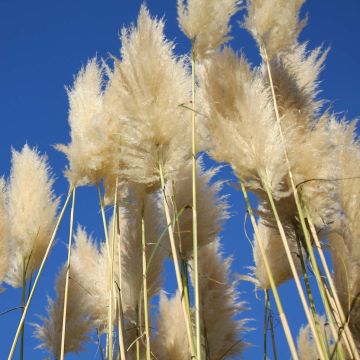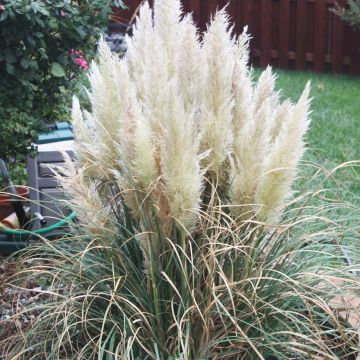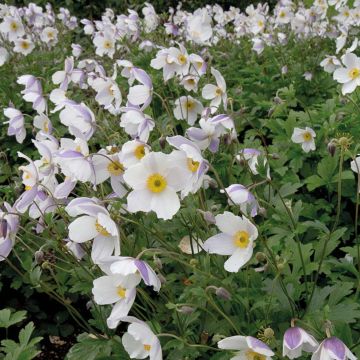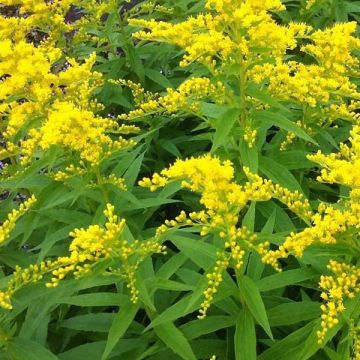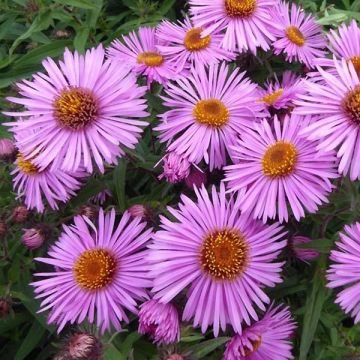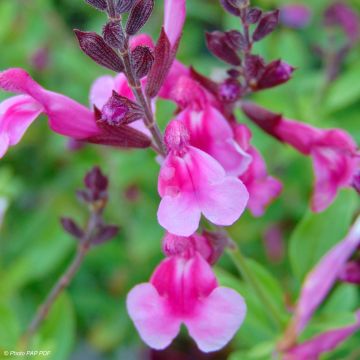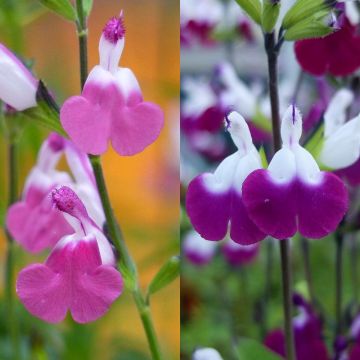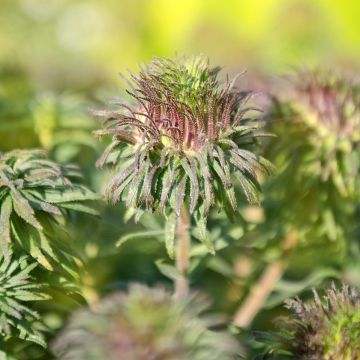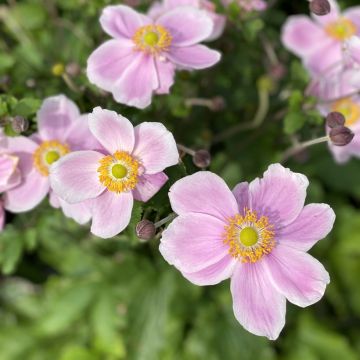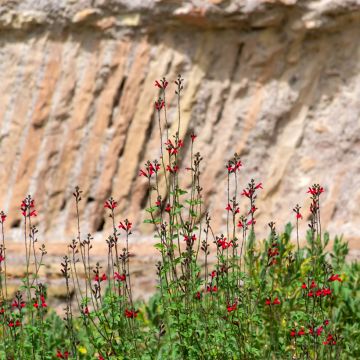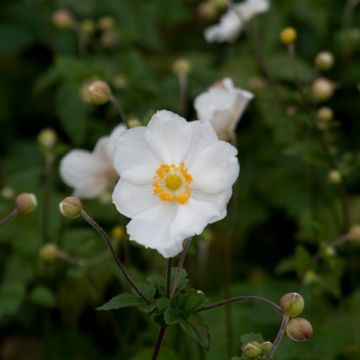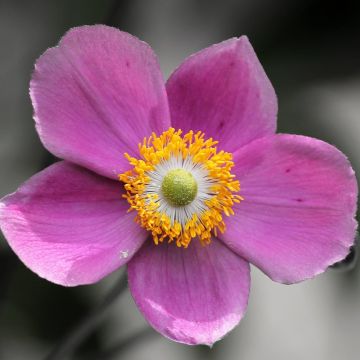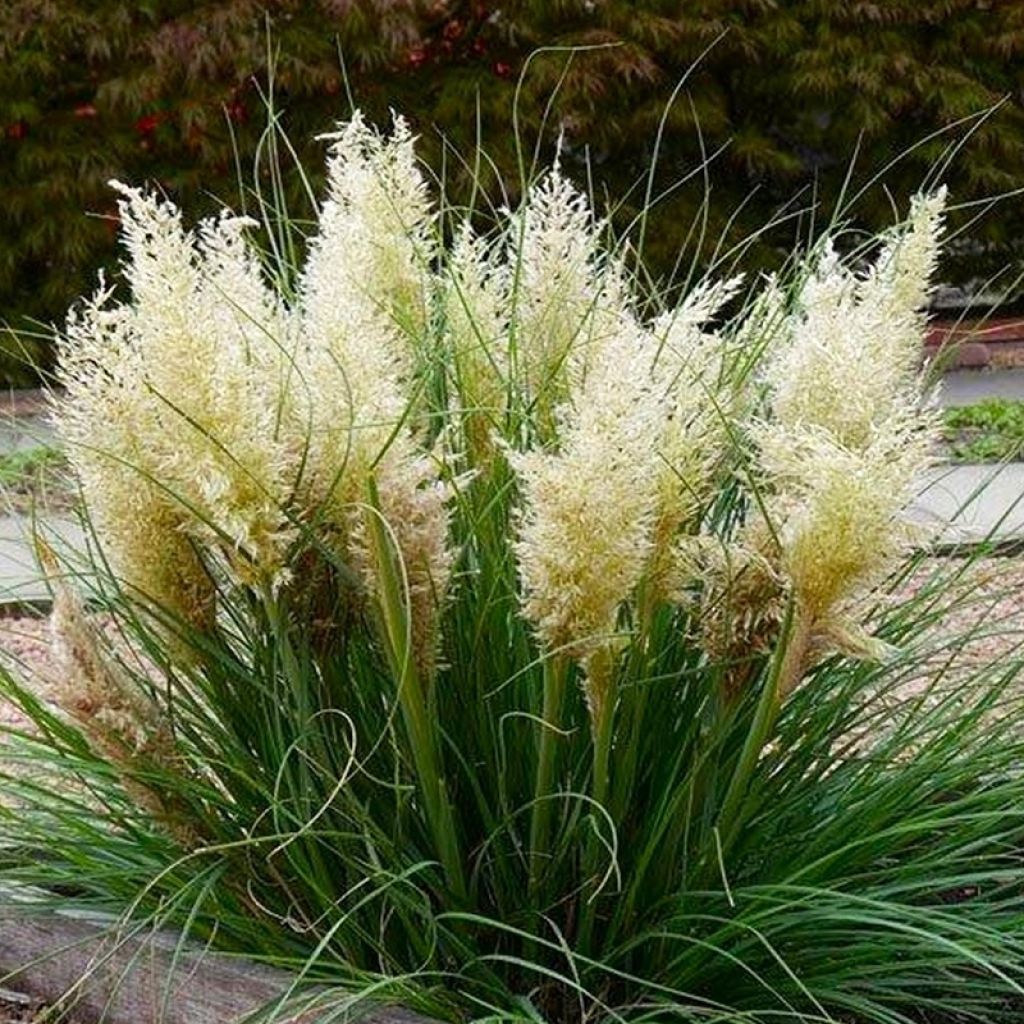

Cortaderia selloana Tiny Pampa - Herbe de la pampa
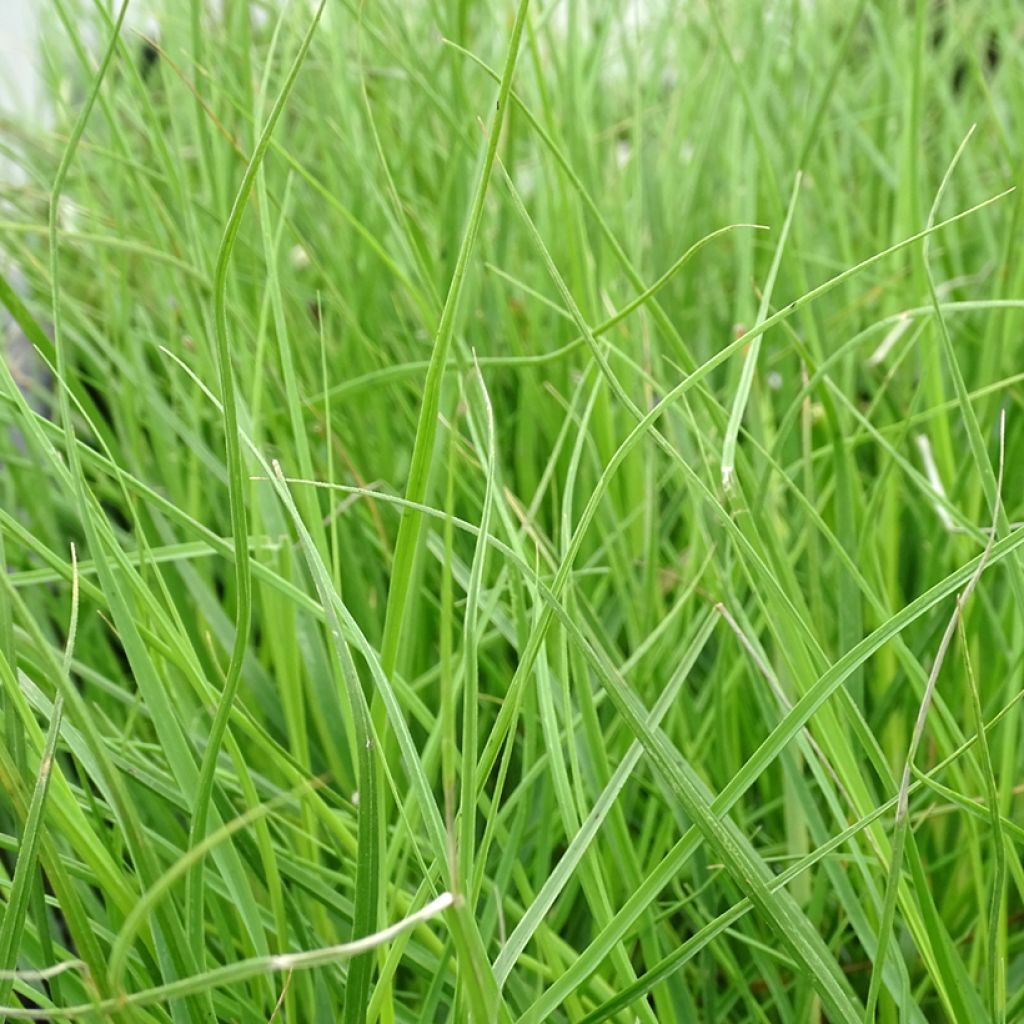

Cortaderia selloana Tiny Pampa - Herbe de la pampa
Cortaderia selloana Tiny Pampa - Pampas Grass
Cortaderia selloana Tiny Pampa
Pampas Grass
This plant carries a 12 months recovery warranty
More information
We guarantee the quality of our plants for a full growing cycle, and will replace at our expense any plant that fails to recover under normal climatic and planting conditions.
From €5.90 for pickup delivery and €6.90 for home delivery
Express home delivery from €8.90.
Does this plant fit my garden?
Set up your Plantfit profile →
Description
IMPORTANT: for the preservation of our natural ecosystems, we have removed this plant from our catalogue as it is considered invasive. It is therefore no longer available for sale.
Cortaderia selloana 'Tiny Pampa' is undoubtedly the smallest variety of Pampas Grass currently available in the horticultural market. This selection is nonetheless very floriferous, allowing every gardener to enjoy the charm of this grass even in restricted spaces or on a terrace. In late summer, numerous plume-like and silky panicles emerge from its foliage, displaying a white colour with silver reflections. This lovely perennial grass is as easy to grow as the classic Pampas Grass, but slightly less hardy.
Cortaderia selloana Tiny Pampa is a horticultural variety that was awarded a silver medal at Plantarium in 2020. It comes from a highly ornamental tall grass that is also known as Gynerium or Cortaderia argentea, belonging to the family of Poaceae. This plant is native to South America, specifically Argentina and Brazil, where it colonises the edges of roads and paths, stream banks, and fallow areas by abundantly self-seeding. This species is characterised by its great adaptability to the hosting soil, accepting both occasionally waterlogged soils and semi-arid conditions in regions with a subtropical climate. It is a dioecious plant, meaning that there are male and female plants. It has given rise to numerous cultivars, which vary greatly in hardiness.
The 'Tiny Pampa' variety is mainly distinguished by its reduced growth, but also by its increased floribundity. This grass forms tufts of linear, evergreen foliage during mild winters. The leaves are sharp, tough, and rustle. The mature plant reaches a height of about 60 cm (24in) when in flower, with a spread of 50 to 60 cm (20 to 24in). Its slightly arched habit somewhat resembles that of a fountain. The leaves have a fairly deep grey-green-blue colour. Its beautiful flower heads appear in late summer, in August-September, at the centre of the shrub, in the form of large plume-like panicles that remain on the plant at least until November, while taking on intense silver reflections. They are borne on sturdy, cylindrical stems that are highly resistant to wind. When both male and female individuals are present, female plants produce a large quantity of seeds that are dispersed by the wind.
This tall grass, which has been omnipresent in our gardens since the 1960s, needs no introduction. The only point that can perhaps be emphasised is the misuse that has been made of it. It is true that it looks a bit ridiculous, planted there all alone in the middle of a lawn when it is so beautiful when used in mass plantings or in a flower bed among bushes. The Cortaderia selloana 'Tiny Pampa' indeed forms attractive shrubs with a very exotic appearance and has the advantage of adapting to all gardens in mild climates, even the smallest ones. Its strong presence adds structure and grace to flower beds and low-growing shrubs. Plant it among asters and chrysanthemums, in front of smoke bushes or repeat-flowering roses. In urban areas, Pampas Grass blends well with its pastel colours, as it softens corners without clashing.
Attention: Pampas Grass can be invasive in certain regions. When it escapes from gardens, it colonises fallow lands, sandy areas and wetlands causing significant ecological disruption. If you live in an affected region, we recommend not planting it. It can be replaced by many other architectural grasses, such as Miscanthus.
Report an error about the product description
Cortaderia selloana Tiny Pampa - Pampas Grass in pictures
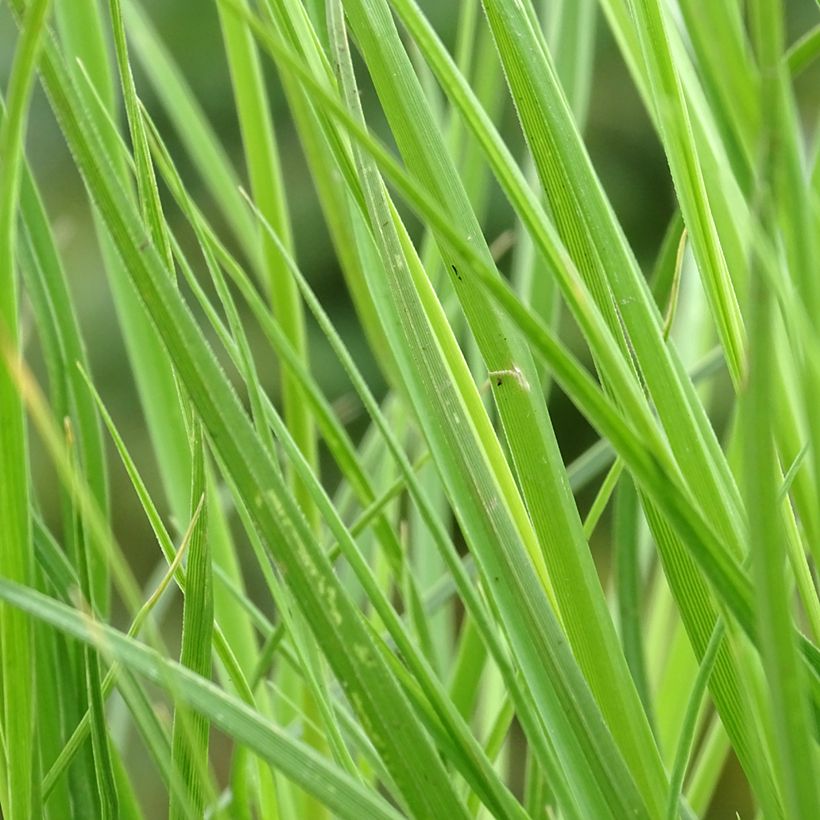

Flowering
Foliage
Plant habit
Botanical data
Cortaderia
selloana
Tiny Pampa
Poaceae
Pampas Grass
Cultivar or hybrid
Other Cortaderia
Planting and care
Cortaderia selloana 'Tiny Pampa' appreciates above all good sunshine. Ideally, place it in a fairly rich, fresh, but well-drained soil. However, it will be satisfied with poor and mediocre soil, even salty, disliking excessively heavy and compact soils, soaked with water in winter. Easy to grow, it tolerates perfectly limestone or salty soils. Water abundantly after planting. Then, provide regular watering during the first year. At the end of winter (March to April), cut the dead leaves, but do not cut back all the foliage. Be careful, the leaves are sharp, it is better to protect your hands with thick gloves. A mature plant of 'Tiny Pampa', well established, will withstand temperatures down to -12°C (10.4°F) at most. In colder regions, plant it in a sheltered location, in well draining soil, preferably in spring for it to survive severe frosts. Growing it in pots allows it to be protected from the strongest frosts in winter.
Planting period
Intended location
Care
This item has not been reviewed yet - be the first to leave a review about it.
Late flowering perennials
Haven't found what you were looking for?
Hardiness is the lowest winter temperature a plant can endure without suffering serious damage or even dying. However, hardiness is affected by location (a sheltered area, such as a patio), protection (winter cover) and soil type (hardiness is improved by well-drained soil).

Photo Sharing Terms & Conditions
In order to encourage gardeners to interact and share their experiences, Promesse de fleurs offers various media enabling content to be uploaded onto its Site - in particular via the ‘Photo sharing’ module.
The User agrees to refrain from:
- Posting any content that is illegal, prejudicial, insulting, racist, inciteful to hatred, revisionist, contrary to public decency, that infringes on privacy or on the privacy rights of third parties, in particular the publicity rights of persons and goods, intellectual property rights, or the right to privacy.
- Submitting content on behalf of a third party;
- Impersonate the identity of a third party and/or publish any personal information about a third party;
In general, the User undertakes to refrain from any unethical behaviour.
All Content (in particular text, comments, files, images, photos, videos, creative works, etc.), which may be subject to property or intellectual property rights, image or other private rights, shall remain the property of the User, subject to the limited rights granted by the terms of the licence granted by Promesse de fleurs as stated below. Users are at liberty to publish or not to publish such Content on the Site, notably via the ‘Photo Sharing’ facility, and accept that this Content shall be made public and freely accessible, notably on the Internet.
Users further acknowledge, undertake to have ,and guarantee that they hold all necessary rights and permissions to publish such material on the Site, in particular with regard to the legislation in force pertaining to any privacy, property, intellectual property, image, or contractual rights, or rights of any other nature. By publishing such Content on the Site, Users acknowledge accepting full liability as publishers of the Content within the meaning of the law, and grant Promesse de fleurs, free of charge, an inclusive, worldwide licence for the said Content for the entire duration of its publication, including all reproduction, representation, up/downloading, displaying, performing, transmission, and storage rights.
Users also grant permission for their name to be linked to the Content and accept that this link may not always be made available.
By engaging in posting material, Users consent to their Content becoming automatically accessible on the Internet, in particular on other sites and/or blogs and/or web pages of the Promesse de fleurs site, including in particular social pages and the Promesse de fleurs catalogue.
Users may secure the removal of entrusted content free of charge by issuing a simple request via our contact form.
The flowering period indicated on our website applies to countries and regions located in USDA zone 8 (France, the United Kingdom, Ireland, the Netherlands, etc.)
It will vary according to where you live:
- In zones 9 to 10 (Italy, Spain, Greece, etc.), flowering will occur about 2 to 4 weeks earlier.
- In zones 6 to 7 (Germany, Poland, Slovenia, and lower mountainous regions), flowering will be delayed by 2 to 3 weeks.
- In zone 5 (Central Europe, Scandinavia), blooming will be delayed by 3 to 5 weeks.
In temperate climates, pruning of spring-flowering shrubs (forsythia, spireas, etc.) should be done just after flowering.
Pruning of summer-flowering shrubs (Indian Lilac, Perovskia, etc.) can be done in winter or spring.
In cold regions as well as with frost-sensitive plants, avoid pruning too early when severe frosts may still occur.
The planting period indicated on our website applies to countries and regions located in USDA zone 8 (France, United Kingdom, Ireland, Netherlands).
It will vary according to where you live:
- In Mediterranean zones (Marseille, Madrid, Milan, etc.), autumn and winter are the best planting periods.
- In continental zones (Strasbourg, Munich, Vienna, etc.), delay planting by 2 to 3 weeks in spring and bring it forward by 2 to 4 weeks in autumn.
- In mountainous regions (the Alps, Pyrenees, Carpathians, etc.), it is best to plant in late spring (May-June) or late summer (August-September).
The harvesting period indicated on our website applies to countries and regions in USDA zone 8 (France, England, Ireland, the Netherlands).
In colder areas (Scandinavia, Poland, Austria...) fruit and vegetable harvests are likely to be delayed by 3-4 weeks.
In warmer areas (Italy, Spain, Greece, etc.), harvesting will probably take place earlier, depending on weather conditions.
The sowing periods indicated on our website apply to countries and regions within USDA Zone 8 (France, UK, Ireland, Netherlands).
In colder areas (Scandinavia, Poland, Austria...), delay any outdoor sowing by 3-4 weeks, or sow under glass.
In warmer climes (Italy, Spain, Greece, etc.), bring outdoor sowing forward by a few weeks.

































